Infrared saunas come in many shapes and sizes, and it’s for good reason. Every house has different spaces for their home wellness sanctuary, and the type of sauna you purchase will be a reflection of those needs. The biggest question we get is usually, “How big should my sauna be?”.
The answer differs from person to person, but one underlying fact that needs to be considered is – do you want an indoor infrared sauna or an outdoor sauna.
In this article we are going to explain what the difference between an indoor saunas and outdoor saunas and answer the burning question, “can I put an indoor sauna outside?”.
Indoor Sauna Vs Outdoor Sauna: What's the Difference?
The biggest difference between an indoor sauna and an outdoor sauna is that indoor saunas are built for being inside and undercover away from the weather, and outdoor saunas are built to endure the weather.
This has a significant impact on the quality and construction of the sauna – no matter the sauna brand – a cheap sauna vs an expensive sauna can be the difference between a sauna that can withstand the outdoors and one that cannot.
The difference this has on the saunas are:
- The overall size of the cabin due to additional waterproofing and insulation
- The average cost of the sauna due to more materials needed, however, the electricity cost of an infrared sauna remains similar.
- The overall weight of the sauna due to it being larger and containing more materials
- And the type of materials used to ensure they remain waterproofed and can endure the weather
These are necessary difference because infrared saunas are electric and any moisture or liquid that makes its way into the wiring or heating applications of the sauna will ruin it. Specifically, Clearlight Saunas utilise patented technology to reduce the amount of electric radiation from an infrared sauna, however, these ultra-low EMF saunas are still subject to water damage if not taken care of.
Saunas are also made from timber, usually eco-friendly, and the interior is soft and delicate cedar wood. Beautiful and fragrant, cedar marks easily, and even excessive sweating without a towel will leave sweat marks through the interior, let alone a bucket of rain.
The best outdoor saunas need to be extra resilient and have additional waterproofing and sealing to avoid any wind, sun, salt, rain, and hail damage. For this reason, even many outdoor saunas require a sauna cover to minimise the risk of any damages, both aesthetically and technically impairing.
Outdoor saunas are also usually slightly larger than indoor saunas. Not only because the style is better suited for accommodating multiple people, but also because of the extra material used to protect the delicate interior from weather conditions, adding extra width to most structural components.
Clearlight® Saunas have an Outdoor Full Spectrum Infrared Sauna that utilises an external Cedartech® Shell. Not only does this shell look aesthetically pleasing and continue to resemble the timber features adored by Clearlight owners, but it also is tough and durable, allowing protection from rain, sun, wind, hail, and sea breeze.
Like all things, the shell is not perfect and mother nature still remains undefeated, therefore we provide and recommend the use of an outdoor sauna cover when not in use or during heavy storms.
Indoor saunas aren’t built with these problems in mind and for good reason. Additional waterproofing, larger, thicker, heavier materials, additional structural additives, and larger makes, all raise the cost of producing one of these products exponentially, as well as changing the look.
Clearlight® Sanctuary Saunas have beautiful and delicate accent lights, a glass ceiling, and stained cedar all on the exterior. These attributes cannot be made to endure harsh outdoor weather conditions, even with a sauna cover. This makes the aesthetic, technical, and practical features of an indoor sauna unsuitable for the outdoors.
How do you Waterproof a Sauna?
Waterproofing a sauna is essential for placing it outside. Like most things, the best solution is usually a preventative one.
The easiest, safest, and most practical way to waterproof a sauna is to avoid any moisture in or on it in the first place.
For the outdoors, this looks like undercover areas that are safe from rain and moisture.
A pergola may or may not be suitable, depending on the cover from any sideways winds and rain.
If an undercover structure isn’t the type of waterproofing you want, maybe because of aesthetics or the theme of your space, the next best thing is to purchase a sauna that is already waterproofed, such as our Clearlight® Outdoor Saunas.
As we’ve already mentioned, this design comes from +22yrs of experience in infrared saunas for the outdoors, and any additional waterproofing by you is not needed.
Now, if you don’t want to build a structure around your sauna to make it waterproofed, and you don’t want to purchase an already waterproofed sauna, the other options of waterproofing yourself we do not recommend and cannot be done to a Clearlight® Sauna without voiding the sauna lifetime warranty.
The first out of these options would be to apply a waterproof stain and seal to the exterior of your sauna. This of course would depend on the type of material you use for your sauna in the first place.
This option will require multiple coats, and continual upkeep to ensure the waterproofing doesn’t fade from the weather conditions – which it most certainly will very regularly.
Please keep in mind that a sauna is used for your health, and provides health benefits from using heat. Any toxic materials used will cause outgassing to occur, and potentially cause devastating effects on your health.
The second of these options is again quite simple, construct your sauna from waterproof materials that are non-toxic.
Whether you like it or not, saunas need ventilation, so a more traditional sauna approach with a chimney will be required for a sauna built from a shipping container or the like.
Again, this option will depend on your aesthetic and physical limitations and will require you to build a sauna from scratch instead of converting an indoor sauna into an outdoor sauna.


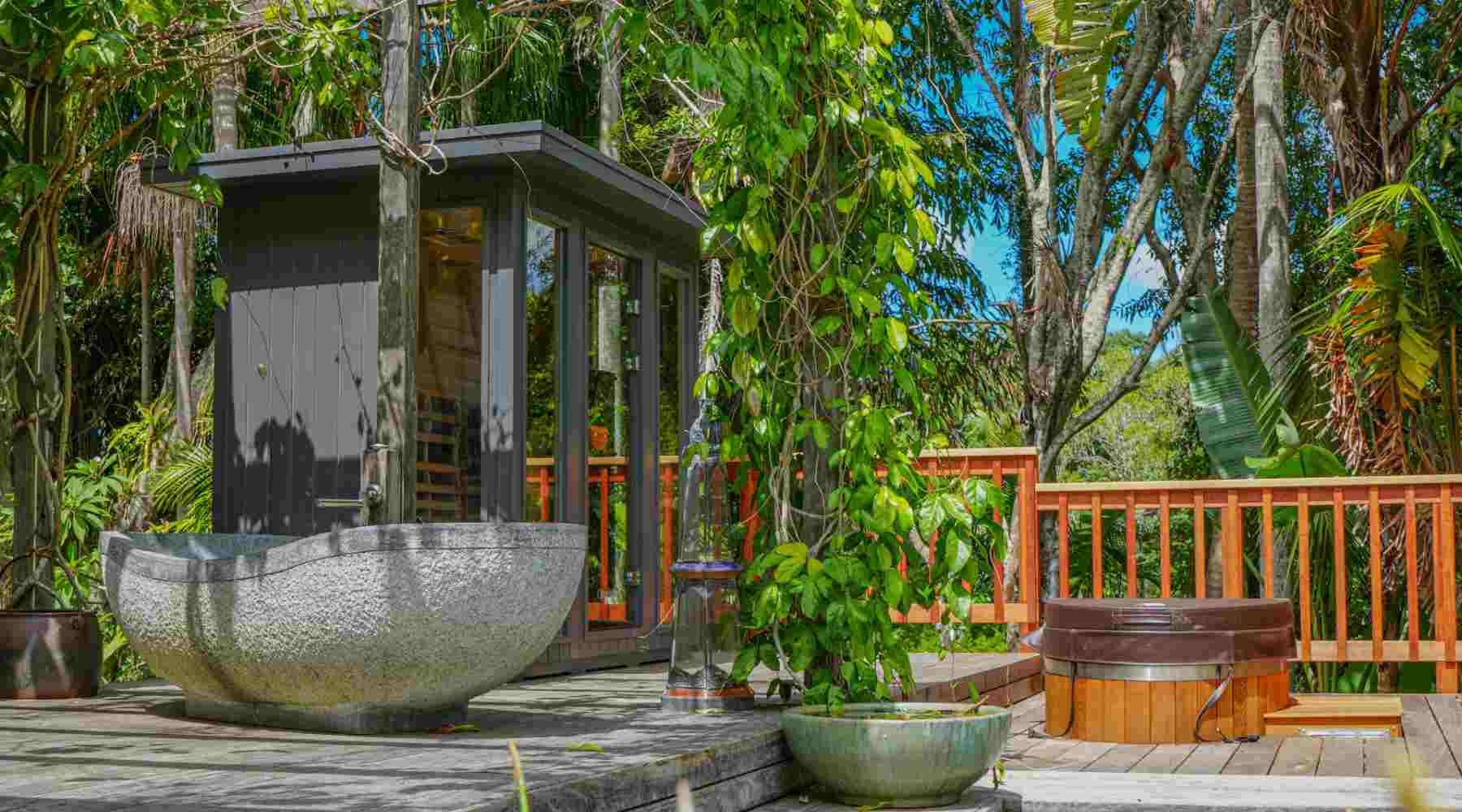
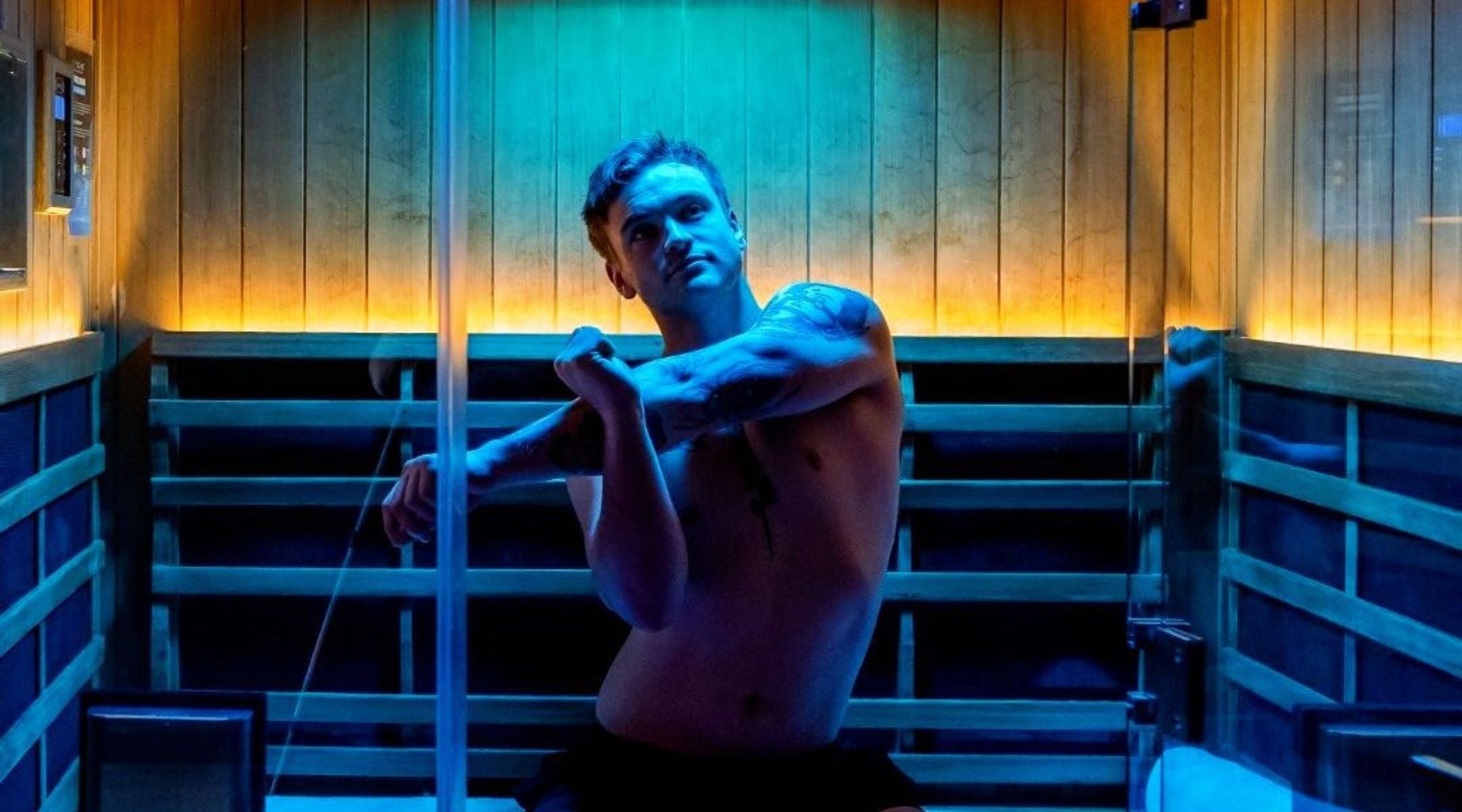
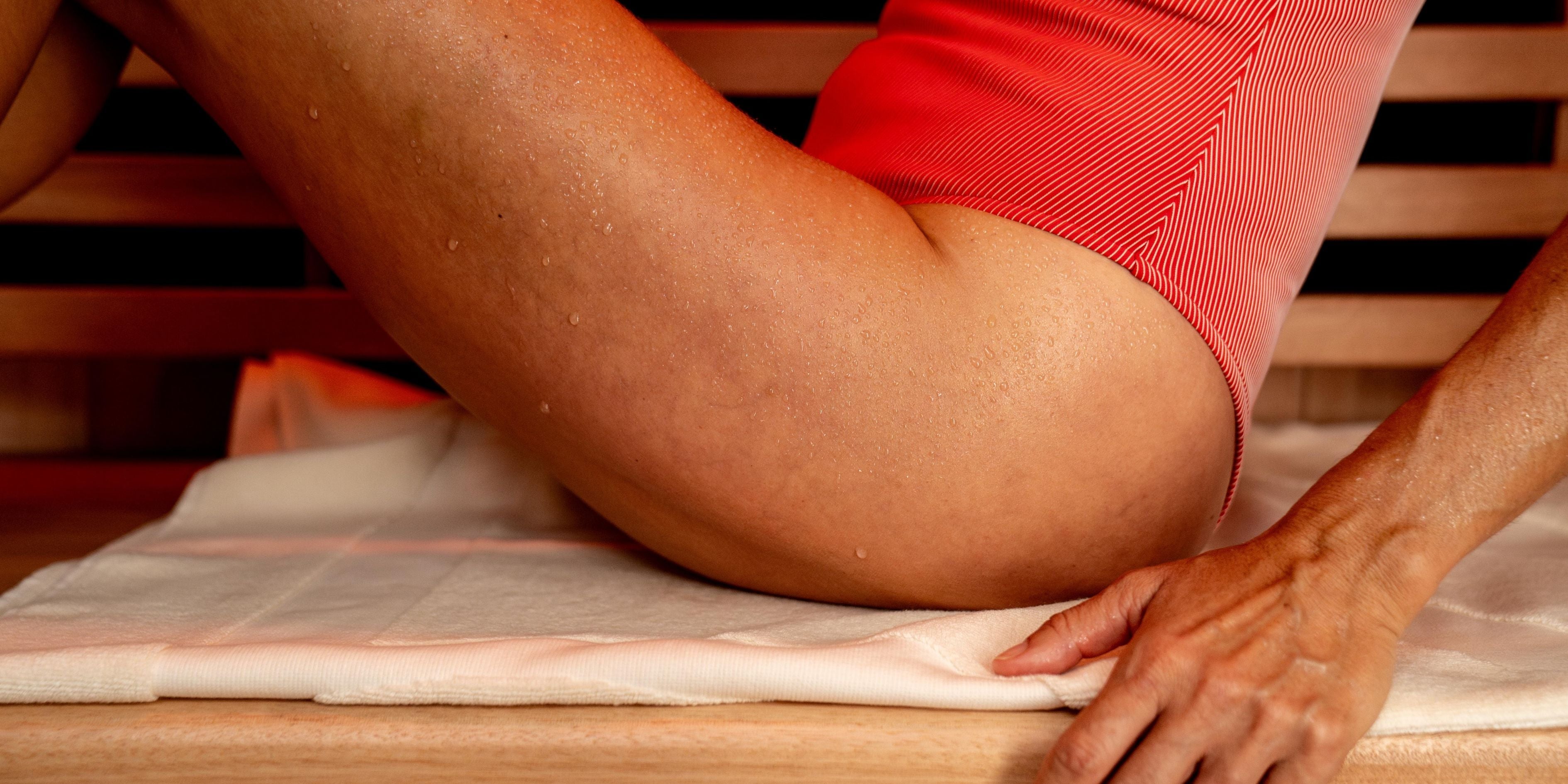
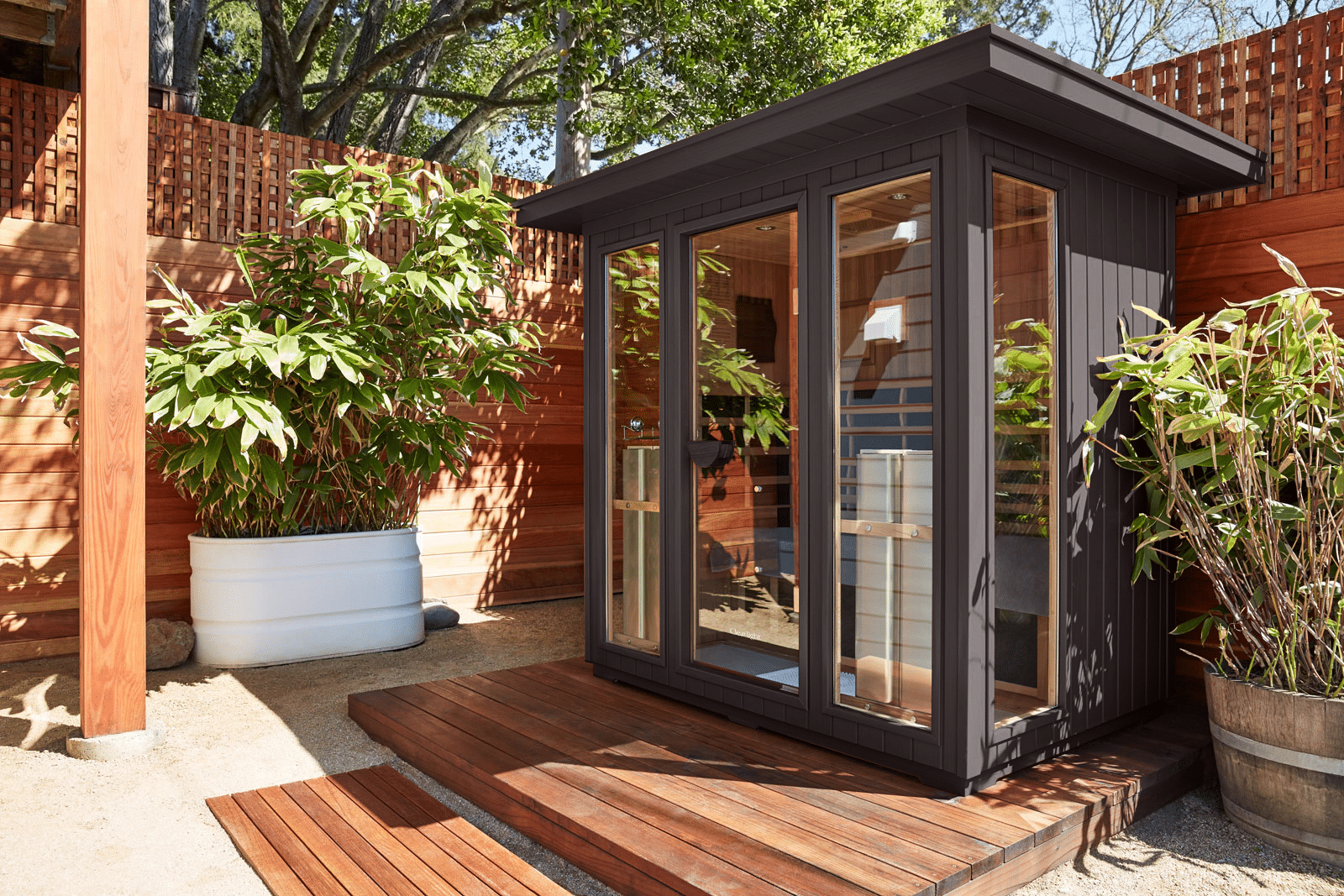

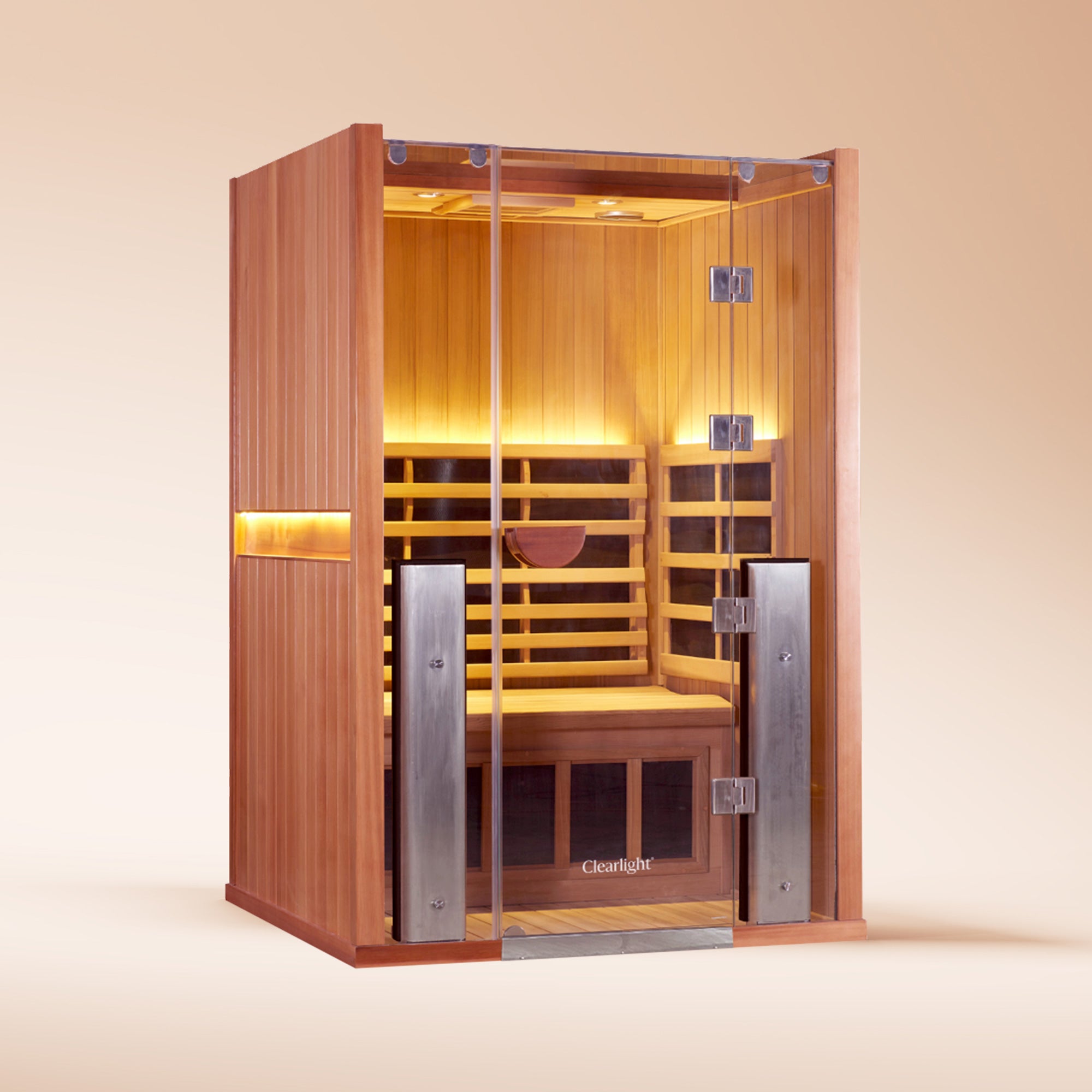

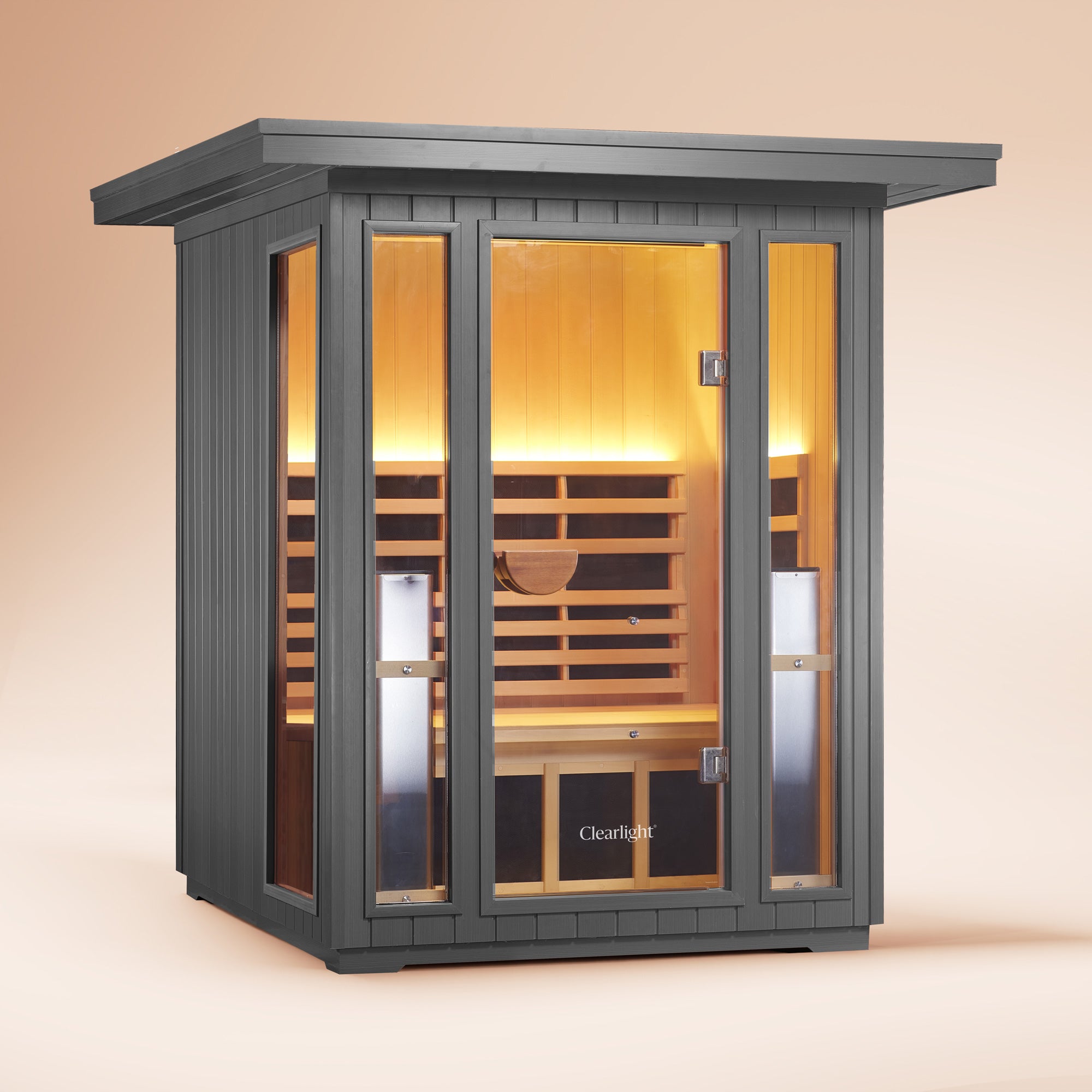
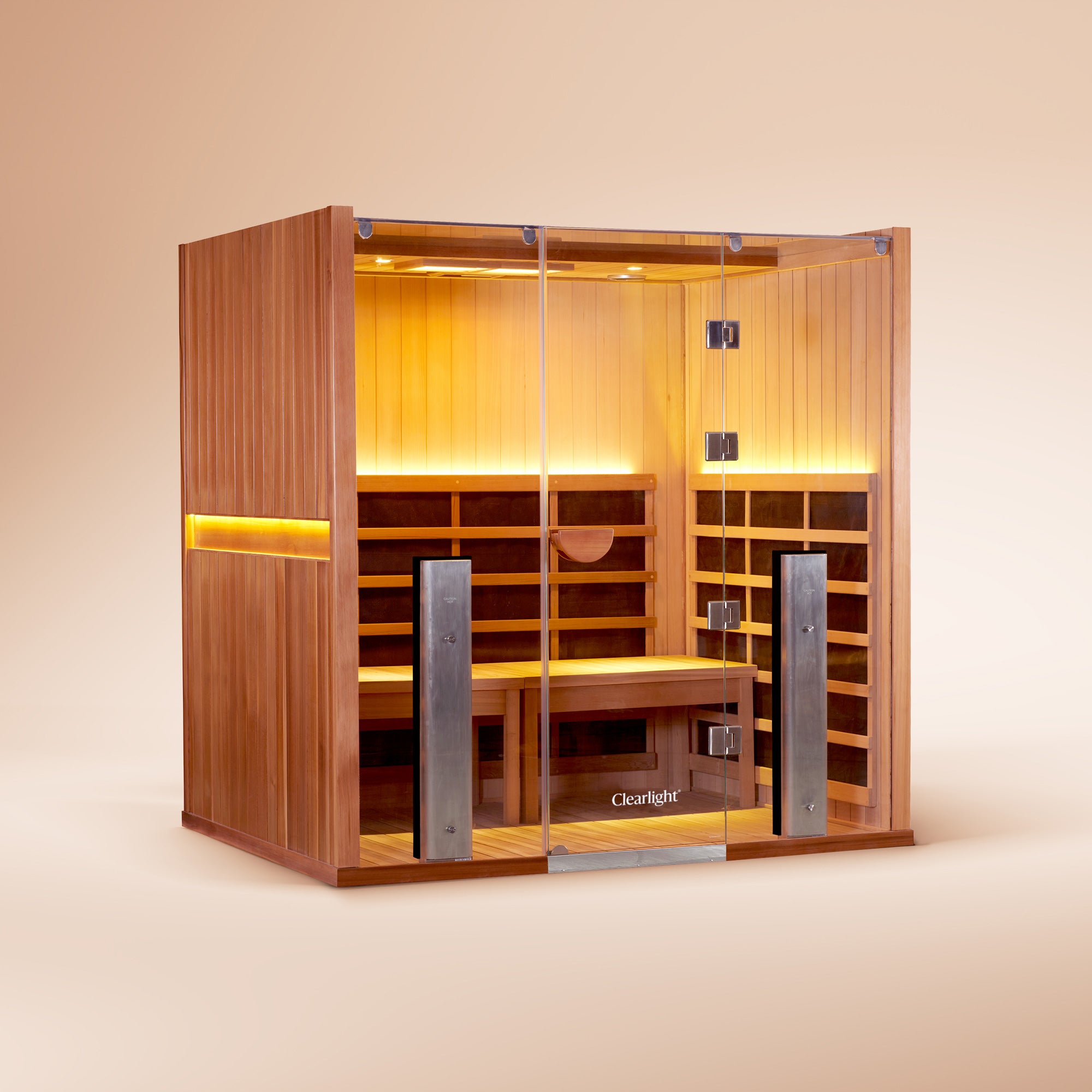
Can You Take An Apple Watch Into A Sauna?
Infrared Saunas in Summer